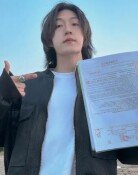Butterfly Park in Jeju: in memory of Seok Joo-myung
Butterfly Park in Jeju: in memory of Seok Joo-myung
Posted October. 06, 2014 03:30,
Spring maiden, country maiden, city girl, entertainer, northern entertainer all sound like they are about young women, but they are names for butterflies. Seok Joo-myung, who pioneered Korean butterfly research, has categorized the names according to the shape, color and size after seeing them flitter about mountains and fields around Korea. Some of the names, window pane, chimney, and hell, seem to contrast with the pretty, peaceful image of the butterfly. Just knowing the yellow and white butterflies in a childrens song would not be enough.
From the Chinese philosopher Zhuangzis dream of butterfly, to the butterfly effect as set forth by U.S. meteorologist Edward Lorenz, butterflies have inspired a variety of achievements in culture, arts, philosophy and science. By applying the nano structure of butterfly wings, which create beautiful hues without dyes, research has made paint that does not contain toxic pigments, and spy robots in the shape of butterflies are under way. The butterfly is noted in various parts of life in fashion, design, and swimming etc. It is not rare to see TV news discussion shows feature speakers wearing bow ties, which are of a shape like butterflies.
Seok, who was born to a wealthy Pyongyang family in 1908, was charmed by butterflies while studying at the Kagoshima Agricultural High School in Japan in 1926. He analyzed some 16,000 butterflies to write one research paper after collecting a total of 750,000 butterflies to research. Through these efforts, he found butterflies that Japanese scholars had mistakenly categorized into different types were the same species, and made significant contributions to providing a systematic taxonomy of butterfly types on the Korean Peninsula.
During the Korean War, Seok did not evacuate to protect the butterfly specimens at the Seoul National Science Museum. Yet the museum was bombed, destroying the samples, and Seok himself was shot to death after being mistaken for a North Korean soldier. It was when he was 42, on October 6, 1950, 64 years ago. In Seogwipo, Jeju Island, the Seok Joo-myung Park was created to commemorate his research into butterflies and Jeju island geography and dialect. The city of Seogwipo also plans to push building a butterfly museum and a commemorative center for Seok. The fall butterflies flitting around makes us think his spirit was as free as a butterfly.







